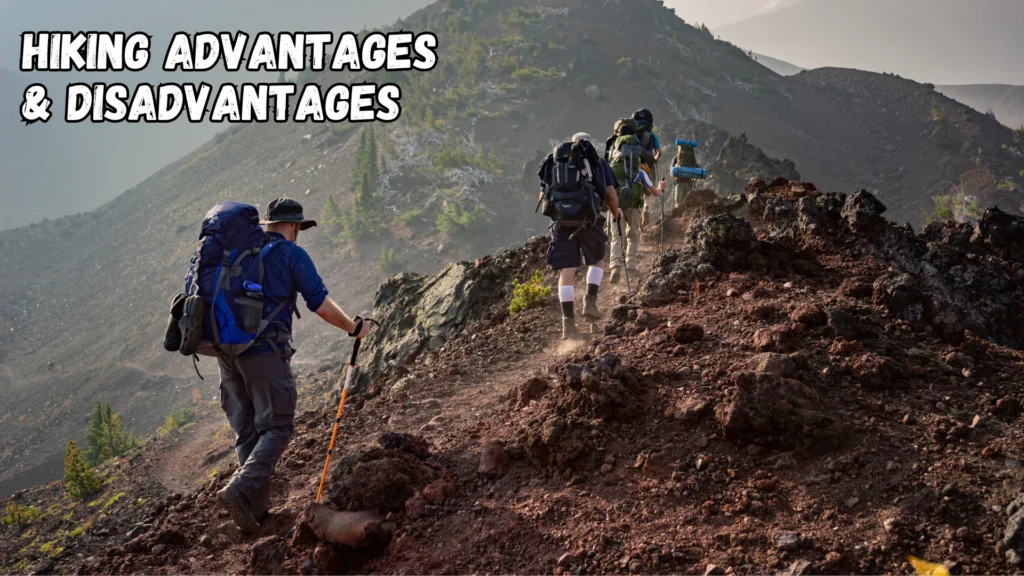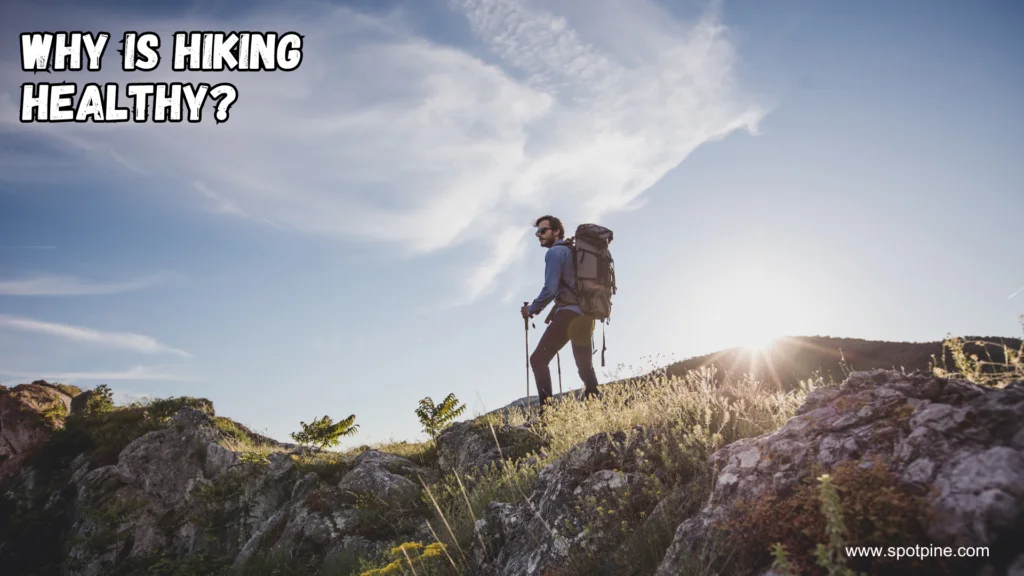To go hiking, you need essential gear such as proper footwear, weather-appropriate clothing, a backpack, navigation tools, a hydration system, and safety items. These items will ensure your comfort, safety, and enjoyment during your adventure.
When it comes to venturing into the great outdoors, having the right hiking gear is crucial for a successful and enjoyable experience. Whether you’re embarking on a short day hike or a multi-day trek, being prepared with the necessary equipment can make all the difference.
From sturdy hiking boots to a reliable backpack, each piece of gear serves a specific purpose in enhancing your outdoor excursion. Additionally, having the right clothing, navigation tools, hydration system, and safety items can significantly contribute to your overall comfort and safety. Furthermore, being well-prepared allows you to fully immerse yourself in the beauty of nature without any unnecessary worries. Hiking gear plays a pivotal role in ensuring that you have a safe and enjoyable outdoor adventure. With the right equipment at your disposal, you can fully embrace the beauty of nature and make the most of your hiking experience.
Choosing The Right Gear
When it comes to hiking, choosing the right gear is essential for a comfortable and enjoyable journey into the great outdoors. Each piece of gear plays a crucial role in ensuring you have a safe and successful hike.
Comfortable Footwear
Selecting appropriate footwear is vital for supporting your feet and preventing blisters or discomfort on the trail. Look for sturdy hiking boots with good ankle support and a firm grip on various terrains.
Proper Clothing
Wearing weather-appropriate clothing is key to staying comfortable and protected during your hike. Opt for moisture-wicking fabrics to keep you dry and layer up for changing conditions.
Backpack
Your backpack is your portable storage unit during a hike, so choose one that fits well and distributes weight evenly. Make sure it has enough space for essentials like water, snacks, a map, and a first aid kit.
Essential Navigation Tools
When heading out for a hike, having the right navigation tools is crucial for a safe and successful adventure. Here are the essential tools that every hiker needs:
Map And Compass
A map and compass are timeless navigation tools that are reliable even in remote areas with no signal.
Gps Device
A GPS device provides accurate location tracking and can be a valuable tool especially in unfamiliar terrain.
Personal Locator Beacon
A Personal Locator Beacon (PLB) can be a lifesaver in emergencies, alerting rescuers to your precise location.
Safety Equipment
When it comes to hiking, safety should always be a top priority. Having the right safety equipment can make a huge difference in emergency situations and can help ensure a safe and enjoyable hiking experience. In this section, we will discuss the essential safety gear that every hiker should carry: a First Aid Kit, Emergency Shelter, and a Headlamp.
Strong first Aid Kit/strong
A First Aid Kit is an absolute must-have when venturing into the great outdoors. Accidents can happen, and being prepared can make all the difference in preventing small injuries from turning into big problems. A well-stocked First Aid Kit should include:
- Tweezers and scissors for removing splinters or cutting bandages
- Antiseptic wipes or solution to clean wounds
- Band-aids and adhesive bandages in different sizes
- Gauze pads and adhesive tape for larger wounds
- Disposable gloves to protect against infection
- Painkillers and antihistamines for minor aches, pains, or allergic reactions
- An emergency whistle and a signal mirror for attracting attention if needed
Strong emergency Shelter/strong
Having a reliable emergency shelter can be a lifesaver in unexpected situations, such as getting caught in a sudden storm or becoming injured on the trail. It is recommended to carry a lightweight emergency shelter that can protect you from the elements while providing insulation and warmth. Some popular options include:
- A lightweight and compact tent designed for emergency use
- An emergency bivy sack or sleeping bag
- A tarp or emergency blanket that can be quickly set up as a shelter
Strongheadlamp/strong
A reliable headlamp is an essential piece of safety gear, especially if you plan on hiking in low-light conditions or exploring caves. Having a hands-free light source allows you to navigate the trail with ease and ensures you can see any potential hazards along the way. When choosing a headlamp, consider the following:
- Look for a headlamp with adjustable brightness settings and a wide beam angle
- Ensure it has a long battery life and consider carrying spare batteries
- Choose a lightweight and comfortable design that won’t weigh you down
- Check if it is waterproof or at least water-resistant to withstand unexpected rain showers or water crossings

Hydration And Nutrition
When preparing for a hiking trip, ensuring that you have adequate hydration and nutrition is pivotal for sustaining energy and staying healthy during your adventure. Here are the essential items you need to consider for your hike:
Water Bottle Or Hydration Bladder
When it comes to staying hydrated on the trails, having a reliable water vessel is crucial. A hydration bladder is ideal for hands-free sipping as it can be conveniently integrated with a backpack. On the other hand, a water bottle offers durability and easy access for quick sips. Choose the option that best suits your hiking style and ensure it has a sufficient capacity for your planned route.
Energy-rich Snacks
Keeping your energy levels up is vital during a hike, and energy-rich snacks are the key. Packing lightweight, high-energy foods like nuts, dried fruits, and energy bars ensures you have quick, accessible fuel to keep you going. Consider options that are easy to carry and provide a good balance of carbs, proteins, and fats to sustain your energy levels.
Water Purification System
When venturing into the outdoors, ensuring access to safe drinking water is essential. A water purification system such as water purification tablets, a portable water filter, or a UV purifier can safeguard you against harmful pathogens. Always prioritize water safety and be prepared for any situation that may compromise your water source.
Protection From The Elements
Hiking exposes you to the whims of Mother Nature, making it essential to be prepared for the elements. Here are the key gear essentials for protecting yourself from the elements:
Sun Protection
Protecting yourself from the sun’s harmful rays is crucial when hiking. Consider these sun protection must-haves:
- Sunscreen: Apply a broad-spectrum sunscreen with an SPF of at least 30.
- Sunglasses: Invest in sunglasses with UV protection to shield your eyes from the sun.
- Wide-brimmed hat: Shield your face and neck from the sun with a wide-brimmed hat.
Rain Gear
Don’t let unexpected rain dampen your hiking experience. Be sure to pack these rain gear essentials:
- Waterproof jacket: Keep dry with a lightweight, breathable, and waterproof jacket.
- Rain pants: Stay comfortable with waterproof, breathable pants to wear over your hiking attire.
- Waterproof backpack cover: Protect your gear from getting soaked by using a waterproof backpack cover.
Insulation Layers
Insulation layers are crucial for maintaining body warmth in changing weather conditions. When selecting your insulation layers, consider these options:
- Moisture-wicking base layer: Keep dry by wearing a moisture-wicking base layer that draws sweat away from your skin.
- Insulating mid-layer: Stay warm with an insulating mid-layer, such as a fleece or down jacket.
- Weather-resistant outer layer: Choose a weather-resistant outer layer, like a windproof or water-resistant jacket, to protect you from the elements.
Tools For Comfort And Convenience
When it comes to hiking, having the right gear can make all the difference in your comfort and convenience on the trail. Tools that provide comfort and convenience can enhance your overall hiking experience, allowing you to focus on the beauty of nature and the joy of exploration. In this blog post, we will explore three essential tools for comfort and convenience: trekking poles, a multi-tool, and a portable stove.
Trekking Poles
Trekking poles are invaluable tools that help you maintain balance, reduce strain on your joints, and navigate challenging terrain. These lightweight and adjustable poles offer stability and support, making your hike safer and more comfortable. When choosing trekking poles, look for ones with ergonomic handles, adjustable lengths, and durable materials. With the right pair of trekking poles in hand, you can conquer steep inclines, descend rocky slopes, and hike for longer durations without feeling fatigued.
Multi-tool
The multi-tool is a versatile and compact gadget that combines various essential tools into one portable device. This tool is a handy companion for hikers, offering a wide range of functions such as a knife, pliers, screwdriver, can opener, and more. Investing in a high-quality multi-tool ensures that you are equipped to handle unexpected situations or emergencies while on the trail. Its lightweight design allows you to carry it easily in your backpack, making it accessible whenever you need it.
Portable Stove
A portable stove is a must-have tool for outdoor enthusiasts who enjoy cooking their meals while hiking. These stoves are designed to be lightweight, compact, and efficient, enabling you to boil water, cook food, and brew hot beverages on the go. Look for a portable stove that uses fuel sources such as canister gas, alcohol, or wood pellets, depending on your preferences and the availability of fuel in your hiking destination. With a portable stove, you can enjoy hot meals and drinks, even in the midst of nature.
In conclusion, trekking poles, a multi-tool, and a portable stove are essential tools for hikers seeking comfort and convenience on the trail. These tools not only enhance your hiking experience but also provide practical solutions to common challenges that may arise during your outdoor adventures. Investing in these tools ensures that you are well-prepared for any situation, enabling you to fully immerse yourself in the beauty of nature without compromising on comfort or convenience.
Communication Devices
When venturing into the great outdoors, it’s essential to have the right communication devices to stay connected and ensure your safety. Whether you’re hiking solo or with a group, these tools can provide peace of mind and assistance in case of emergencies.
Cellphone
- Cellphones are a crucial hiking tool for emergencies.
- Ensure your phone is fully charged before heading out.
- Store your phone in a waterproof case for protection.
Two-way Radio
- Two-way radios are useful for group communication on the trail.
- Choose a radio with long-range capabilities for better reception.
- Practice using the radio before your hike to ensure proper operation.
Optional But Recommended Gear
In addition to the essential hiking gear, there are some optional but recommended items that can enhance your hiking experience. Consider packing the following gear to make the most of your outdoor adventure:
Camera
Don’t miss the chance to capture the breathtaking scenery and memorable moments along the trail with a lightweight camera. Preserve your hiking memories with stunning photos.
Binoculars
Enhance your wildlife spotting and take in panoramic views with a pair of compact binoculars. Get a closer look at birds, animals, and scenic vistas during your hike.
Insect Repellent
Keep pesky bugs at bay and protect yourself from bites by carrying effective insect repellent. Enjoy a more comfortable hike without the distraction of buzzing insects.

FAQs:
What Are The Essential Clothing Items For Hiking?
When hiking, it’s crucial to wear moisture-wicking base layers, durable hiking pants, and waterproof jackets. Opt for breathable and lightweight materials that provide both insulation and ventilation. Adequate footwear such as hiking boots or trail shoes with good traction is also essential to ensure safety and comfort.
What Gear Should I Carry For Safety During Hikes?
Safety is paramount when hiking. It’s essential to carry a first aid kit, navigation tools like a map and compass, a multipurpose tool, sunscreen, and plenty of water. Additionally, a headlamp, emergency whistle, and extra layers of clothing can be lifesaving in unexpected situations, ensuring a safe and enjoyable hike.
How Do I Choose The Right Backpack For Hiking?
Select a backpack with adjustable padded straps, a hip belt, and multiple compartments for organization. Consider the capacity based on the length of your hikes and the items you need to carry. Look for features like hydration reservoir compatibility and breathable back panels for added comfort during long treks.
Conclusion
To sum up, having the right hiking gear is essential for a safe and enjoyable outdoor adventure. By investing in high-quality equipment such as sturdy boots, a backpack with proper fit, weather-appropriate clothing, navigation tools, and first aid supplies, you can ensure a successful hiking trip.
Remember, being prepared and equipped with the right gear will not only enhance your experience but also keep you safe on the trails. So, gear up and embark on your next hiking journey with confidence!




Pingback: Difference between Hiking And Camping? - SpotPine
Pingback: Is Hiking Expensive? Manage Your Costs Efficiently